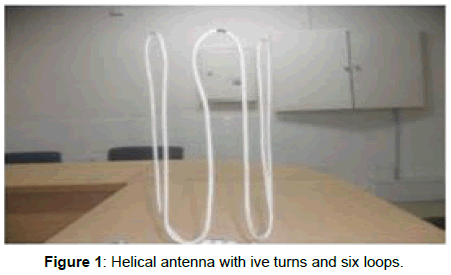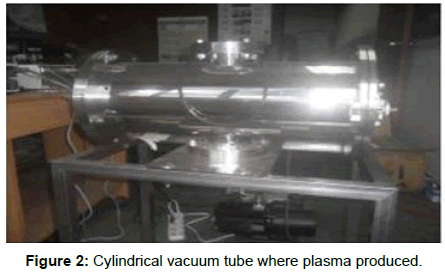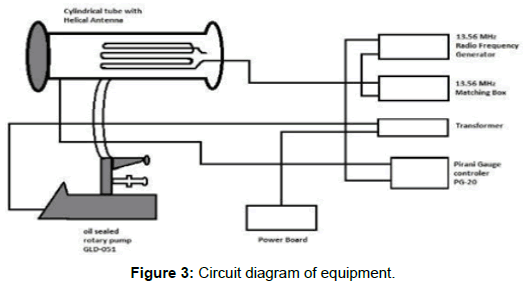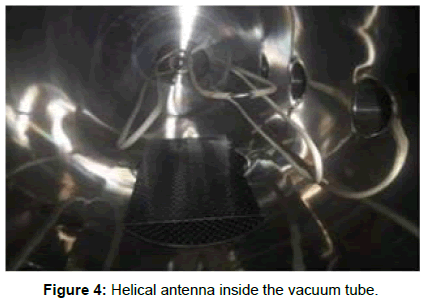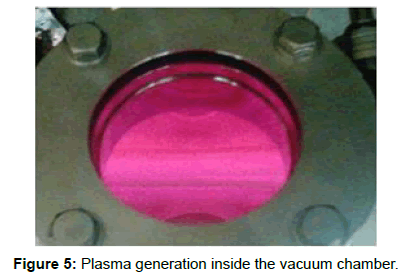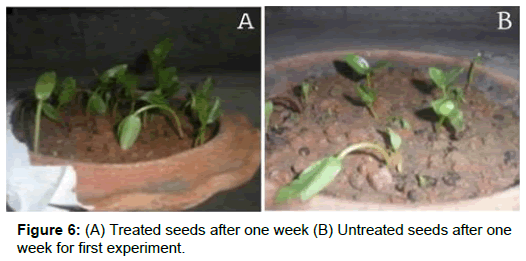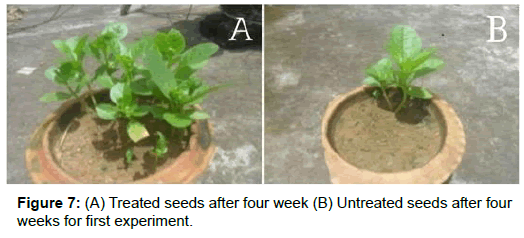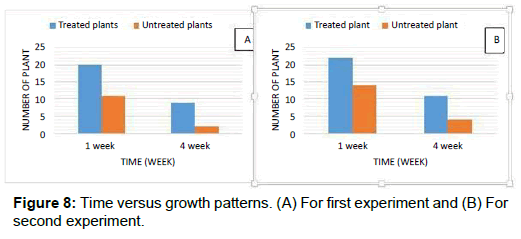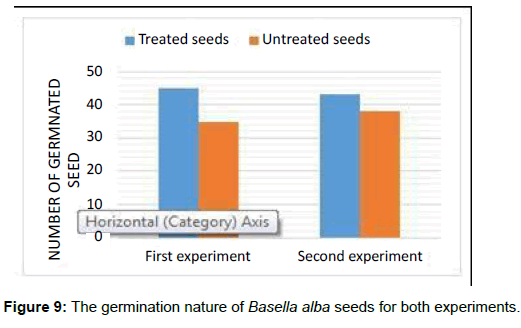Short Communication, J Phys Res Appl Vol: 3 Issue: 1
Modification of Germination Rate and Growth Pattern of Basella Alba Seed by Low Pressure Plasma
Hassan MM1*, Islam MA2, Abu Md AK1 and Khan KA3
1Bangladesh Atomic Energy Commission, Dhaka, Bangladesh
2Department of Physics, University of Barisal, Barisal 8200, Bangladesh
3Department of Physics, Jagannath University, Dhaka 1100, Bangladesh
*Corresponding Author : Hassan MM
Bangladesh Atomic Enery Commission, Dhaka, Bangladesh
E-mail: mehedihasan083@gmail.com
Received: August 21, 2018 Accepted: May 30, 2019 Published: June 06, 2019
Citation: Hassan MM, Islam MA, Abu Md AK, Khan KA (2019) Modification of Germination Rate and Growth Pattern of Basella alba Seeds by Low Pressure Plasma. J Phys Res Appl 3:1.
Abstract
Radio frequency (RF) induced low pressure plasma has significant impact on enhancement of the germination of seeds and growth patterns of the plants comes from irradiated seeds. For this consequence present study is performed on Basella alba seeds which is a very familiar vegetable After plasma irradiation, the results shows that the germination rate of treated seeds are more than untreated seeds. Result shows for two experiments the germination rate increase 10% and 20% respectively for plasma irradiated seeds. Also the growth patterns and sustainability rate of treated seeds are vigorous. These outcomes will be beneficial to farmer’s economy and also vegetable consumers.
Keywords: Helical antenna; Rotary vacuum pump; Pirani gauges controller; Treated seed
Introduction
The population of the world is increasing day by day. For that consequence the demand of food is increasing day by day. Food is the basic need for development of civilization. The industrialization of the society promotes human life but reduce cultivation land. To meet up the food demand it is customary to utilize all cultivation lands and improve scientific technique in crops field. Increasing the germination of various seeds is the key tools for optimization of seeds quantity and hence increases crops yields. Chemical process for increasing Germination rate is potential but detrimental in case of human contact. Also these processes leave chemical residues which are harmful for environment. To avoid such problem plasma technology is impressive. Plasma refers the fourth state of universe [1]. At present Plasma is being investigated in food decontamination and extending shelf-life. In agriculture sector plasma is being used for treatment of plant disease and improving plant growth [2]. Plasma treatment using low pressure plasma systems include Electronics, Micro systems technology, Plastics industry, Semiconductor industry and Textile treatment [3]. Obtaining large yields in agricultural production is essential due to the world’s population growth and increased food demand. In this research low pressure plasma had been applied to Basella alba seeds for enhance germination nature, growth patterns and sustainability.
Experimental Work
The technique of creating low pressure plasma involves within a chamber that has been evacuated and then allowing injection of small amount gases, usually oxygen, argon, hydrogen, nitrogen or air through vacuum chamber. The helical antenna which works as cathode through which radio frequency passes can easily ionize the gas into electrons and positive ions [4]. The hellical antenna is made through aluminum cord. The cord is then bending with five turns, as shown in Figure 1. The choice of this kind of structure is to make the antenna more potential through cylindrical area, as it is placed inside a cylindrical tube latter. These kinds of structure make the antenna physically shorter for convenient. The five turns automatically make the antenna with six loops. It is then placed inside a large cylindrical tube. One end of this hellical antenna is connected to the matching box and 13.6 MHz Radio frequency signal generator. The evacuation process of cylindrical tube is made by vacuum pump, called Direct-Drive Oil Sealed Rotary Vacuum Pump, Model GLD-051 which can able to suck inside air of vaccuum chamber [5]. The cylindrical tube has different segment and connected together, forms finally cylindrical structure (Figure 2). Two terminal of the tube are closed with circular metal disk by screw. At the time of vacuum process, the disk must need to me closed.
The required equipment for producing Radio Frequency low pressure plasma in this research are given, Vacuum chamber, An oil seal rotary pump, A 13.56MHz radio frequency signal generator, A 13.56MHz matching box, A transformer, A pirani gauge controller, A power board, Some wire. All connection is confirmed with air tight.
The RF generator is connected to a matching box also say tuner, whose function is to tune the Radio Frequency power to system eithers it is reflected back or power provided to system. The 13.56MHz generator is also connected to the pirani gauge meter. The pirani gauge meter is used to measure the pressure into the vacuum chamber. The pirani gauge meter is also connected to the vacuum chamber. Figure 3 and Figure 4 show the helical Antenna inside the vacuum chamber.
The vacuum process through which the pressure is continuously reduced can be shown through pirani gauge meter. To check the vacuum process, stop sucking air into the tube. If the pressure is fixing, it indicates the vacuum process is perfectly on going. If the pressure is increase, indicates air entered into the tube. As a result the vacuum process will be hampered. Under the vacuum process, at a certain pressure 4.8 × 10-1 pa, air is allowed to flow into the vacuum chamber by a nob, until the pressure is reached 6.3 × 10-1 pa. The RF current pass through the helical antenna can easily ionize air molecule, creating sustainable plasma [6]. Figure 5 shows low pressure plasma inside the vacuum chamber. Plasma has significant effect on seeds. Many experiments have been taken about it. RF plasma treatment of biological objects becomes a significant tool for modification of their chemical and physical properties [7,8]. Free radical in the plasma states stimulates the germination hormone of plant seeds. The produced RF low pressure plasma was applied on Basella alba seeds, belongs to the family of Basellaceaae which is a familiar vegetable in our country. One hundred fresh Basella alba seeds were collected and divide them equal number. Fifty number Basella alba seeds were taken and put it inside the vacuum chamber before vacuum process. Then these seeds were irradiated about 30 minutes through plasma. Then it’s preserved without touching hand. This plasma irradiated seeds is called treated seeds. Rest of the fifty seeds those were not plasma irradiated is called untreated seeds. Then this procedure was repeated i.e. another 50 number of Basella alba seeds were plasma irradiated with same time and rest fifty untreated seeds were preserved. Then all those seeds were planted.
Results and Discussion
After plantation deep investigate was going on how plasma effect on Basella alba seeds. Proper care was taken of the planted seeds. The perfect amount of water on the seed was given regularly. After two or three day all the seeds are germinated. The germination manner of seeds under both experiments, including treated and untreated seeds are observed. All the planted seeds were Protected from unexpected difficulties i.e. might not missing or damage and observed them regularly. Below Table 1 and Table 2 show the two experimental data for this research. After one week from germination period the growth patterns of both treated and untreated seeds of first experiment was noticed carefully. A significant difference was found between the treated and untreated seeds.
| Number of seeds | Irradiation time | Number of germinated seeds | Germination rate | Sustainable plants | Sustainability rate | ||
|---|---|---|---|---|---|---|---|
| After one week | After four weeks | After one week | After four weeks | ||||
| Untreated (50) | 30 minutes | 35 | 70% | 11 | 2 | 44% | 6% |
| Treated (50) | 30 minutes | 45 | 90% | 20 | 9 | 31% | 20% |
Table 1: First experimental data.
| Number of seeds | Irradiation time | Number of germinated seeds | Germination rate | Sustainability rate | Sustainability rate | ||
|---|---|---|---|---|---|---|---|
| After one week | After four weeks | After one week | After four weeks | ||||
| Untreated (50) | 30 minutes | 38 | 76% | 14 | 4 | 36% | 8% |
| Treated (50) | 30 minutes | 43 | 86% | 22 | 11 | 51% | 25% |
Table 2: Second experimental data.
Figure 6 shows the numbers of treated seeds are more than the untreated seeds after one week. Also the treated plants are stronger than the untreated plants. The numbers of treated plants are 20 on the other hand the number of untreated plants are 11 after one week. After four weeks the observed situation was also significant. There are 9 numbers of treated plants and only 2 numbers of untreated plants shown in Figure 7. The treated plants are also more vigorous than the untreated plants. Note that in first experiment, out of 50 number seeds, 45 number treated seeds are germinated while 35 number untreated seeds are germinated. The germination rates of treated seeds are 90% while untreated seeds are 70%, provided plasma irradiation increases the germination rate. This calculation is simply done by unitary method. An important significant of first experiment was the sustainability capacity of treated seeds. After one week the sustainability rate of treated seeds was 44% while untreated seeds are 31%. After four weeks the sustainability rate of treated seeds was 20%, decreased with time but still higher than the untreated seeds which was only 6%. This result indicates that overall sustainability of treated seeds was increase.
In second experiment the outcomes are nearly similar. Here out of 50 number seeds the germinated treated seeds are about 43 number and geminated untreated seeds are 38 number. So the germination rate of treated seeds and untreated seeds was 86% and 76% respectively. After one week the remaining treated plants are 22 numbers, while untreated plants are 14 numbers. So the sustainability rate after one week for treated seeds was 51% and 36% for untreated seeds. After four weeks the remaining treated plants are number 11 and untreated plants are 4 number. The sustainability rate treated plants after four weeks was 25% and only 8% for untreated plants. Figure 8 shows the germination nature of Basella alba seeds. The growth patterns of two repetitive experiments are shown in Figure 9. A graph is plotted showing corresponding time vs. number of Basella alba plants relation. Along horizontal axis time is taken and numbers of plants are taken in the vertical axis. Time is measure in week.
The application of plasma treatment on Basella alba seeds shows an increasing of germination and growth patterns. The treated vegetables are larger than controlled vegetables. Another important property of treated seeds is their sustainability. So even in the off season or contrary environment, farmer get the benefit. This statistic will open a new horizon in our agriculture sector. Therefore our findings will be beneficial to our farmer. Farmer get more vegetable (Basella alba) with their usual expectation. Also they get vegetable in short time comparing in usual process. The economic condition of our farmer is not good. The wide application of our findings may change their economic condition.
Conclusion
Recently there has been considerable interest in the use of radio frequency induced low pressure plasma in agriculture fields. Present result shows that low pressure plasma has important progressive impact on increasing Basella alba germination, growth patterns and sustainability condition. The optimistic growth patterns will shorten the vegetable cultivation period. This finding may be helpful in vegetable cultivation method, which will ultimately improve the farmer’s financial condition.
Acknowledgement
The author wants to express gratitude to Bangladesh Atomic Energy Center for providing such a well-furnished lab and permit to entrance there.
References
- Sturrock PS (1994) Plasma Physics: An Introduction to the Theory of Astrophysical, Geophysical & Laboratory Plasmas, (1st edtn), Cambridge University Press, New York, USA.
- Rundberget T, Skaar I, Flaoyen A (2004) The presence of Penicillium and Penicillium mycotoxins in food wastes. Int J Food Microbiol 90: 181-188.
- https://www.thierry-corp.com/low-pressure-plasma-systems
- Reyes DR, Ghanem MM, Whitesides GM, Manaz A (2002) Glow discharge in microfluidic chips for visible analog computing. Lab Chip 2: 113-116.
- Balanis CA (1982) Antenna Theory: Analysis and Design, John Wiley and Sons, New Jersey, USA.
- Stutzman WL, Thiele GA (1998) Antenna Theory and Design, (2nd edtn), John Wiley and Sons, New York, USA.
- Canal C, Molina R, Bertran E, Erra P (2008) Study on the influence of scouring on the wettability of keratin fibers before plasma treatment. Fiber Polym 9: 444-449.
- Molina R, Jovancic P, Jocic D, Bertran E, Erra P (2003) Surface characterization of keratin fibres treated by water vapour plasma. Surf Interface Anal 35: 128-135.
 Spanish
Spanish  Chinese
Chinese  Russian
Russian  German
German  French
French  Japanese
Japanese  Portuguese
Portuguese  Hindi
Hindi 